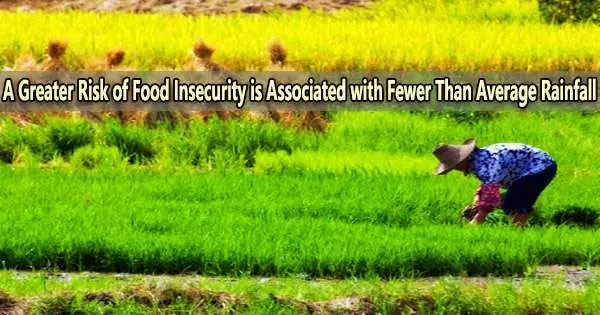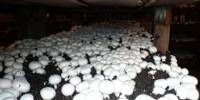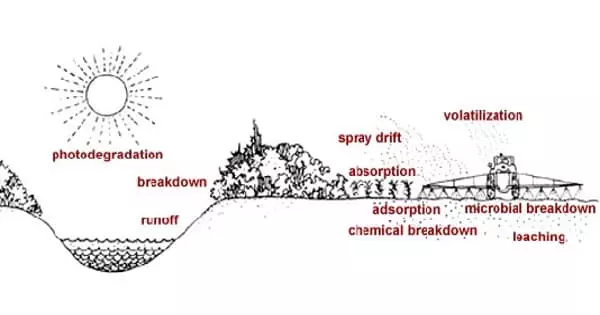Given how climate change is affecting global weather patterns, food poverty is an increasing issue in several parts of the world. According to recent data from Penn State, Tanzania has the highest risk of food insecurity when there is a lack of precipitation.
In particular, the researchers discovered that households in Tanzania were 13 percentage points more likely to experience food insecurity when moving from a year with typical rainfall to one that was unusually dry. This association was most likely caused by the impact of less rain on maize production.
According to Heather Randell, an assistant professor of rural sociology and demography in the Faculty of Agricultural Sciences, the results could have significant policy ramifications aimed at enhancing the drought resistance of agricultural households.
“Climate change will continue to change precipitation patterns, so it’s vital to find ways to help at-risk communities fend off food insecurity,” Randell said. “Potential interventions could include providing drought-tolerant maize, increasing access to agricultural extension services, scaling up agricultural index insurance, improving uptake of soil and water conservation practices, and providing cash transfers based on drought early warning systems.”
Randell said the findings recently published in the journal Food Policy also could apply to other low and middle-income countries, especially those heavily dependent on maize production.
According to the researchers, 2 billion people, or 26% of the world’s population, experienced food insecurity in 2019, which is defined as the inability to obtain enough, nutritious, safe, and inexpensive food. This is particularly true in sub-Saharan Africa, where the prevalence of moderate or severe food insecurity grew from 50% in 2014 to 57% in 2019.
The relationship between low rainfall and food insecurity is likely driven in large part by the effects of weather on maize production. Maize thrives in warm conditions with ample rainfall, as the crop is sensitive to droughts and to both frost damage and extreme heat.
Heather Randell
Food insecurity has been linked to a number of negative health outcomes, including physical and mental health, which can have an impact on household labor productivity, child growth and development, and poverty reduction.
However, the researchers noted that there has been very little research examining the effects of rainfall and temperature on how and whether households experience food insecurity, despite the Intergovernmental Panel on Climate Change’s prediction that food security and nutrition will be increasingly threatened by climate change, particularly in poorer parts of the world that depend on agricultural production.
“Most prior studies have focused on other related outcomes, like child nutritional status or food expenditures,” Randell said. “But these do not offer a comprehensive picture on how climatic conditions affect the quality, quantity and variety of food that households are able to access.”
The goal of the current study was to investigate the relationship between different meteorological conditions and food security in Tanzania, a nation with a high prevalence of food insecurity and a strong reliance on rainfall for the growth of its maize crops.
The researchers connected high-resolution data on rainfall and temperature during the most recent crop season to longitudinal, nationally representative household survey data from more than 3,200 households across Tanzania.
The World Bank Living Standards Measurement Study-Integrated Survey on Agriculture provided assistance to the Tanzania National Bureau of Statistics in collecting survey data, which included information about the quantity and quality of food consumed in households as well as how households react to food shortages. This data then was used to determine whether a household was food insecure or not.
“The relationship between low rainfall and food insecurity is likely driven in large part by the effects of weather on maize production,” Randell said. “Maize thrives in warm conditions with ample rainfall, as the crop is sensitive to droughts and to both frost damage and extreme heat.”
The researchers also discovered that households with fewer people of working age were particularly susceptible to food insecurity during periods of poor rainfall. Randell said this likely is because during drought conditions, households with only one or two working-age members have fewer opportunities to earn additional income compared to those with three or more working-age members.
The findings, according to the researchers, will remain significant as the nation’s weather changes. According to climate estimates, Tanzania would see generally warmer temperatures and more variable rainfall across the nation, with more rainfall expected in the north and northeast of the country and less in the south.
Clark Gray, University of North Carolina, and Elizabeth H. Shayo, National Institute for Medical Research, also participated in this work.
The Eunice Kennedy Shriver National Institute of Child Health and Human Development helped support this research.
















